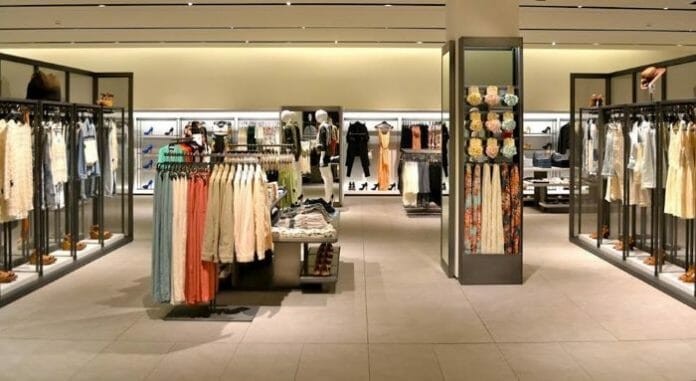Three strategic actions will help fashion brands overcome purchasing barriers, close the attitude-behavior gap, and accelerate sustainable shopping. Brands must address the information gap; engage consumers on product durability and impact, and make sustainable purchases more convenient and appealing.
1. Increase transparency to reduce the information gap
It takes too much effort for consumers to determine whether clothes are sustainable.
Most consumers underestimate the fashion industry’s role as a pollutant, so it doesn’t factor into their shopping decisions. Nor do they fully know the social impacts associated with garment production. Other consumers recognize and care about sustainability in fashion but are bogged down by the complexity. Global supply chains and production processes make it difficult to evaluate the social and environmental impacts of a single garment.
Closing the information gap would decrease the attitude-behavior gap in fashion consumption. Good Citizens are motivated to “do the right thing” if it’s presented to them. Idealists care about sustainability but don’t know how to act on it. Those personas (28% of the market) need more information, not motivation, to purchase sustainably.
To overcome this barrier, in-store displays, labels, and product descriptions need to be clear, easily available, and reliable. Best-in-class brands already include supply chain and partner information, material descriptions, and stories about the communities involved in the making of their clothing. Shedding light on their production processes engages consumers in a genuine and transparent way. Product packaging is another means to communicate (and practice) sustainability.
Brands can also leverage consumers who are already Sustainability Champions. Champions are more than just “target customers”; they are trusted friends and family who can drive sustainable purchasing. Most persona groups rely on social media and word of mouth to research purchases, so brands can benefit from making sustainability information easy for Champions to share.
2. Engage consumers on product durability and impact-per-wear information
Fashion consumers want durability. Above everything else, they want high-quality products and they expect them to last. Even Indifferent consumers, who show little consideration toward sustainability when they shop for clothes, are driven by product durability and quality.
Durability and quality appeal to a wide swath of consumers across generations and income levels and are more relevant to consumers than some intangible features. They don’t require any less effort on consumers’ behalf, and consumers already value them.
Brands can capitalise on these aspects of sustainable fashion and appeal to value-seeking shoppers—as long as they achieve durability without compromising any social or environmental factors. By positioning durability as an element of sustainable fashion, brands offer consumers a win-win situation: Consumers can engage in sustainable activities without weakening key purchasing factors.
Strategically, brands can present durability, quality, and sustainability in the same thread. If brands position fashion as an investment rather than a short-term or seasonal purchase, quality can become a gateway to more sustainable shopping, even among the least-concerned consumers. Brands can engage consumers on durability by including information, such as impact-per-wear or the expected life span of a garment, on product tags or labels.
When impact is presented alongside cost, it’s easier for consumers to make sustainable selections. A garment that lasts a lifetime delivers more value and a lower environmental impact than a lesser-quality choice. Additionally, brands can teach consumers how to repair worn goods, mend garments for them, or resell previously loved items. Reuse initiatives encourage sustainable behavior across a longer product life cycle.
By focusing on durability and quality, brands can shift the industry away from business models that rely on overconsumption and continued volume growth. Brands can grow by extracting more value per product sold, ultimately decoupling growth from volume. High-quality and durable items can command higher revenues per item, and brands can continue to extract value throughout the product’s lifetime through resell and rental models. Resale strategies can also diversify and expand the market for some fashion brands.
3. Make sustainable shopping more convenient and appealing
Many shoppers follow the path of least resistance; their shopping habits are driven by convenience rather than social impact or public opinion. But with simpler and more convenient options, they would increase their sustainable purchasing.
Consumers said sustainable products aren’t available in stores where they shop or the assortment is too limited. They also struggle to distinguish sustainable products and brands from non-sustainable ones. So, even if a shopper wants to purchase sustainably, the product they want might be hard to find.
Unmet demand is readily available for brands and retailers that strengthen their sustainable assortment and make sustainable purchasing easier for consumers.
To achieve this, brands can use store zoning and dedicate space for sustainable products and displays. They can also invest in salesforce training to help consumers find, understand, and purchase more sustainable products.
Activities that increase transparency also increase appeal. For example, storytelling about a garment’s origins or source materials helps consumers distinguish a product as sustainable and creates positive associations with the purchase.
Make sustainability your statement piece
Sustainable shopping is an inevitable sea change. Don’t wait for it. Accelerate it.
Brands that proactively design sustainability into their strategy and operations will cement their relevance and capture a windfall of unmet demand, now and into the future. Most consumers want to purchase more sustainably; they just need help doing so.
Fashion brands can make sustainable purchasing easier for all consumers, not just Sustainability Champions. If brands embrace the sustainability conversation, everyone will benefit.
To start, engage consumers on qualities they care about—durability, quality, value—and help them see these elements through a sustainability lens. Invest in transparency and convenience strategies to shrink the attitude-behavior gap.
Younger consumers demand greater corporate responsibility. They can increasingly discern actual impact from greenwashed marketing ploys, and they want to wear their values on their sleeves. Leaders in the fashion industry will meet their demands.
It’s not an impossible shift. With commitment from the fashion industry, every consumer can be guided toward more sustainable choices and a more promising future.
Bain & Co in collaboration with WWF Italy









